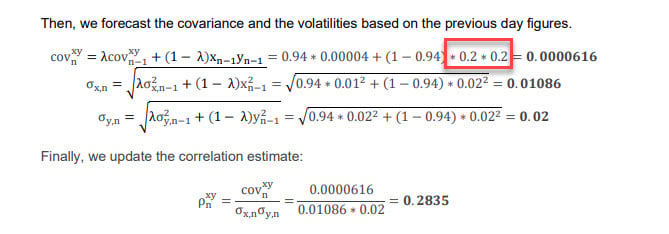Sixcarbs
Active Member
Hi David,
I hope this is the right place for this. There is an error in the video on Hull Chapter 15. You say things correctly but the slide you are pointing at is incorrect.
It is in Hull's example 15.3
Slide says:
.17-(.2/2) = .15
.2 is the volatility, should be variance (.2)^2. Answer .15 is correct.
.17-[(.2)^2]/2= .15
Then below it slide says:
Standard deviation,
sqrt(.2/3)= 0.1155
Should be .2/sqrt(3)= 0.1155
Also, in Study notes, Hull Chapter 13, Binomial Trees. Page 6.
"The risk-neutral probability (= 0.6523) is found first."
I think it should be .5503, which it is in the spreadsheet below. I looked high and low for a way to come up with .6523 and could not calculate it or find a place for it.
I hope this helps.
Sixcarbs
I hope this is the right place for this. There is an error in the video on Hull Chapter 15. You say things correctly but the slide you are pointing at is incorrect.
It is in Hull's example 15.3
Slide says:
.17-(.2/2) = .15
.2 is the volatility, should be variance (.2)^2. Answer .15 is correct.
.17-[(.2)^2]/2= .15
Then below it slide says:
Standard deviation,
sqrt(.2/3)= 0.1155
Should be .2/sqrt(3)= 0.1155
Also, in Study notes, Hull Chapter 13, Binomial Trees. Page 6.
"The risk-neutral probability (= 0.6523) is found first."
I think it should be .5503, which it is in the spreadsheet below. I looked high and low for a way to come up with .6523 and could not calculate it or find a place for it.
I hope this helps.
Sixcarbs






